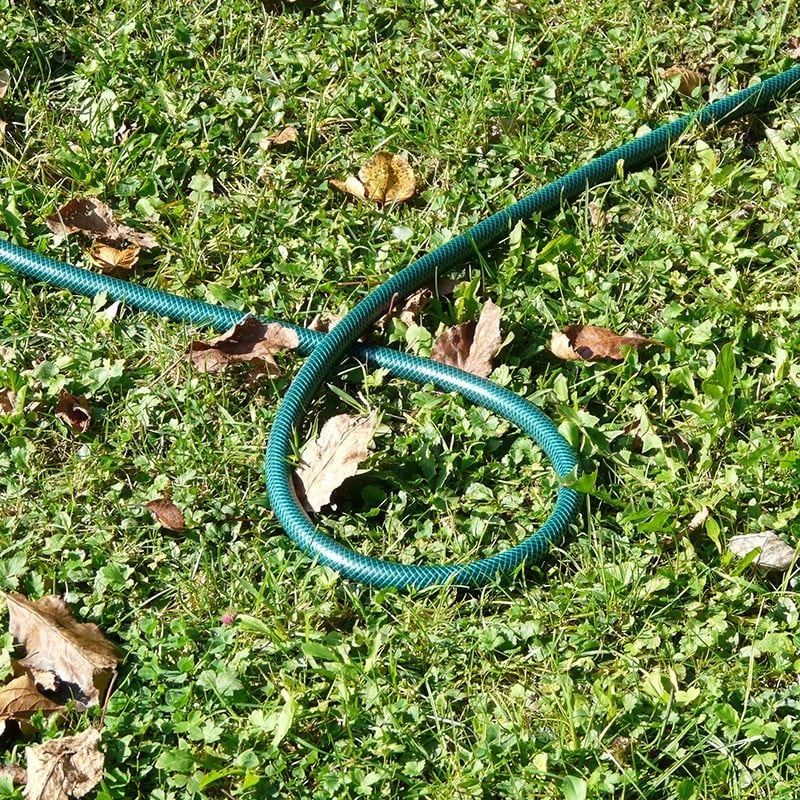 With the advent of the intermittent water shortages we have been experiencing since the summer of 1976 and now the current (2012) hosepipe ban, makes fro watering new lawns, those involved in sowing new lawns from seed, over-seeding existing lawns and laying new lawns from turf are going to have to take steps to cope with the problem in future years.
With the advent of the intermittent water shortages we have been experiencing since the summer of 1976 and now the current (2012) hosepipe ban, makes fro watering new lawns, those involved in sowing new lawns from seed, over-seeding existing lawns and laying new lawns from turf are going to have to take steps to cope with the problem in future years.
WATERING NEW LAWNS FROM SEED
- The most important factor, in the absence of permission to water, is to keep a very close eye on the weather and time the sowing of seed to precede showery weather where possible
- Before carrying out any soil cultivations, make sure you have your seed and other materials to hand so that you can till and prepare the soil quickly and immediately sow the seed. In this way you reduce moisture loss from the soil
- Where possible, if the budget allows, incorporate moisture retention materials such as seaweed granules or zeba moisture retention granules. These materials will store large quantities of water and give it back to the plant once a root penetrates the material.
- Once sown, cover the lawn area with germination sheets. These allow rain or irrigation through to the soil, but reduce evapotranspiration rates from the seed bed. For contractors, these are a good investment as they are inexpensive and can be utilised time and again.
- Be aware that the grass seed is most vulnerable when it has started to ‘chit’, ie started to throw out a radical (root) and a shoot (leaf). This is the period when the emerging plant should not be starved of water. Prior to this happening, the seed can live for some time without water without coming to too much harm
- Grass seeds take anything from 5 days in warm, moist spring weather to 30 days depending on grass species.
- If prolonged dry weather is encountered after the lawn has received it’s first mow, keep the height of cut well up. This should be at a minimum 50mm. Although this will result in less moisture loss from the soil and plants, it will inevitably lead to some early loss of sward density, at least it will help to keep the lawn alive. The sward density can be improved by more frequent mowing and feeding once normal watering can be resumed
- Choosing seed mixtures containing grass species that germinate quickly is helpful and this generally means the inclusion of Perennial ryegrass. Selecting species that have extensive root systems which can scavenge for water such as Tall fescue will help to drought-proof lawns once established
WATERING NEW LAWNS FROM TURF
- Newly laid turf needs to be kept damp for the first 28 days in order to establish successfully. At most times of the year newly laid turf gets enough moisture from the soil and from occasional rainfall to satisfy its needs.
Turf is laid throughout the year except August, but turf laid in the months April to July is most at risk of failure from lack of moisture. Without sufficient rainwater newly laid turf needs watering with a hosepipe or sprinkler.
The TGA recommends that the maximum amount of water required to establish newly laid turf over a period of 28 days, whether from rainfall or through s supplemental irrigation, is 63 litres per m2. This water is needed in differing amounts during the establishment phase: - Water Volumes Required
Days 1-3 10 litres per m2
Days 4-5 5 litres per m2
Days 6-28 1 litre per m2
Total 63 litres per m2
The figure recommended by the Sports Turf Research Institute
Tips for Watering Newly Laid Turf
- When you prepare the ground for turfing, use a soil conditioner to increase the soil’s ability to retain moisture.
- Plan ahead to prevent the turf drying out: don’t have more turf delivered in a day than you can lay.
- Finish your ground preparation well before the turf delivery. This way, you will be able to start laying the turf as soon as it arrives. The quicker you lay the turf the less chance it has of drying out.
- When your turf is delivered stack it in a shady place.
- Dampen the ground immediately before laying.
- Tamp the turf down lightly as you lay it to ensure good contact with the soil underneath.
- When you have finished turfing, water straight away. The first watering should ensure that the soil is damp to a depth of 100mm. Aim to keep the turf, and the soil under it, damp – you can check this by turning up a corner of the turf.
- In the days following, water only in the early morning or in the early evening, so the sun doesn’t burn off the water you’ve added.
It’s important not to over-water your turf. Over-watering will create boggy conditions – and promote grass diseases. - Water less and less frequently over the next 28 days. Watering New Lawns – The turf should never be allowed to dry out and go brown in this period.
